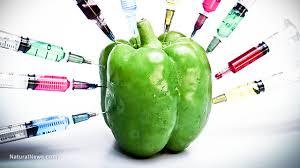
It’s hard to catalog all the issue silliness that seems to pervade the public arena, which means things that show up in the newspapers or that lead to campaigns to make governments or businesses or normal people change their practices or even their preferences. There are a lot of good things, of course, such as forcing the British Open to stop playing its matches at courses like Muirfield, which don’t admit women. Jeez, are there still such institutions in 2016? Well, yes, the eating clubs at Harvard have the same problem except for the golf part. And I am particularly fascinated by the campaign to Save the Vaquita. I had to look this up to find out that it was a small porpoise found only in the norther reaches of the Gulf of Mexico and which is being exterminated by Mexican fishermen using gill nets. I can’t find a good t-shirt to buy to support them, however. Marketing is everything.
Toward the top of my list for the highest level of current silliness is the concern about genetically modified organisms, or “GMO’s,” and the related campaign to ban them. This effort is the trifecta of stupidity: it is scientifically impossible, it is linguistically nonsensical, and if the campaign is it successful will increase food costs everywhere, which will have the most unfortunate impacts on those with less resources. The poor spend a larger percentage of their income on food—about twice as much as rich persons.
If you sample the archaeological record, you will find that the ancestor of today’s corn is a wild grass called teosinte, which produced cobs about an inch long 10,000 years ago, compared to today’s 10 to 12 inch ears. How did we get to today’s human and animal food staple, which in 2015 represented 93.8 percent of all feed grains raised and used for livestock in the US? If you’ve had a hamburger recently, or a pork chop or some buffalo wings, you have teosinte to thank.
The teosinte to corn on the cob transformation is the result of the process of selective breeding. Stated simply, the farmer or seed breeder plants a field of corn—altho this process applies with some modifications to all plant breeding—examines the inevitable variations among the plants, watches which plants do best, and selects for the traits that he or she wants. This is usually higher production but also includes disease and insect resistance, ability to handle dry conditions, appropriate height, color, etc. The seeds from the selected plants are saved, and I guess the rest of the crop is eaten, and the process starts all over again for the following year. Tedious and labor intensive, but it works when you have ten thousand years to practice it. We could have picked any example, but corn is important, because it is the most harvested grain in the world, more than either wheat or rice by about 30 percent each, measured on an annual tonnage basis. Wheat and rice are tied for second.
Why does some corn from the same lot of seed, even from the same plant, generate offspring with subtle differences? Because its genes have been modified, since it was planted and grew into a mature plant, not by man but by nature. Corn, for example, has 2.3 billion “base pairs” or genes in its biological makeup, and was only fully characterized or mapped in 2009. Humans, in comparison, have a genome of about 3 billion genes. 2.3 billion is a big target, and these genes govern a lot of processes and plant characteristics. This is, after all, their role in the biology of life.
When reproduction, and then growth and maturation happen, there are lots of chances for “natural” modifications to some of the many, many genes within the organism—by exposure to radiation (cosmic rays) or harsh chemicals, natural or otherwise, or by the organism’s own processes going slightly awry. Given the number of genes and the number of traits and processes that they control, turning the construction of proteins and lipids on and off and giving them the correct function, it’s not a big surprise that perfect duplication of the parent is not always the result. And then these genomes with their modified genes are passed on to the heirs of the organism. We all have these processes going on all the time in our bodies. When you cut your finger, some genes to grow new skin are turned on, others to form a scab, and then when the skin is formed beneath the scab, the genes are tuned off. Otherwise you’d just keep growing skin that you don’t need. There is no chance, zero, not any, that the genome that you received at conception will be the same one, identically, that you pass on to your children, no matter how early in your life you begin to reproduce. You will inevitably have been modified and you will create a genetically modified organism, your child. And this would be the case even if you cloned yourself, for the reasons above. Note that “sexual reproduction” always results in the reproduced individual (plant or animal) being genetically different from either parent, and we’re not even addressing that here. We already learned that in high school biology.
Thus, our first point: to rail against GMO’s is to suggest that there is such a thing as organisms that are perfect genetic copies of their progenitors. It’s just not possible and not true, even for clones. Throw in sexual reproduction, and it’s a whole new kettle of fish, or organisms.
The linguistic preposterousness comes from the following question: Where do we start? If we don’t like GMO’s, where do we start counting from? To return to corn, do we see if we can find some original teosinte grains and only deal with them? But the original ones of 10,000 years ago don’t exist any longer, they’ve been modified, genetically modified. By natural processes in the wild and by selective breeding. There isn’t a “pure” baseline from which to begin. There probably isn’t an organism in existence today, and certainly not one in commercial use, that hasn’t been genetically modified already. If you want to eat only food that is “GMO” free you’ll starve to death because there isn’t any.
In some ways it would be interesting to become rigorous about labeling. The designation “GMO free” is so misleading as to be foolish. There is no plant or animal material in that can of baked beans, except maybe the water, that has not been genetically modified. The water the beans were cooked in has not been, but it’s a molecule. The label means nothing.
The third stupidity, where we actually try and ban the evil GMO, is the worst. If you could somehow get the governments of the world all to agree to stop human engineered genetic modifications of the plant and animal food base, which let’s presume would prohibit selective breeding as well as the more precise use of existing techniques, then you would be doomed to the current state of agriculture and animal husbandry. A continuation of the remarkable gains in food productivity that we have seen in the last fifty years, starting with the “Green Revolution” in rice cultivation in Asia, would cease. And while we’re at it, let’s revoke Norman Borlaug’s Nobel Prize for the development (aka genetic engineering) that produced the dwarf varieties of rice and wheat and that were the foundation of this dramatic increase in cereal yields. And thus this prohibition would kill our ability to feed a growing world population.
In that case, it would be good dramatically to decrease the world’s population as well. And we wouldn’t really have to take any actions to do that, as plain old starvation would handle the balancing for us.
That’s grim, but wouldn’t banning GMO’s make those few of us who are left much healthier? Isn’t there some argument that somehow GMO’s will have some unexplained negative impact on our health and well-being? It is neither clear what that impact is, nor how a GMO brings about this health deficit. The scientific community is pretty clear on this. A Pew study done in early 2015, in cooperation with the American Association for the Advancement of Science, found that number of scientists who believed that GMO’s are safe exceeded the number who believed in global warming. Belief in flying saucers was not examined.
A more recent, and more exhaustive review of the scientific literature, done by the National Academy of Sciences and released in May 2016, comes to similar conclusions. It states plainly “The committee also examined epidemiological data on incidence of cancers and other human-health problems over time and found no substantiated evidence that foods from GE [genetically engineered] crops were less safe than foods from non-GE crops.”
GMO seeds and crops can be fairly blamed for increasing yields and outputs, and thus keeping food prices low. This at least indirectly contributes to the epidemic of US obesity, but that is not a case any of the critics are making.
The final point is that, whatever the evidence on health impacts, the market has voted, and putting the genie back in the bottle is unlikely. Consider these numbers: as of 2012, GMO seeds were used globally in 81% of soybean and cotton plantings, 35% of corn and 30% of canola. In the US alone, in 2013 80% of the corn and 93% of the soybeans were GMO plantings. Genetically modified organisms are not going away, and the world is a better place because of that. We can fight about water and oil and health insurance, but let’s not fight about this aspect of our food.
Mr. Hemphill is the Chairman and CEO of Sunshine Soldiers, a non-profit focused on education activities happening in energy, especially with regard to the adoption of renewable energy technology by utilities, commercial customers and homeowners, and strategies to benefit from it. Hemphill is also the author for two business travel books, Stories From the Middle Seat: The Four-Million-Mile Journey to Building a Billion Dollar International Business and Dust Tea, Dingoes & Dragons: Adventure in Culture Cuisine & Commerce from a Globe-Trekking Executive.
